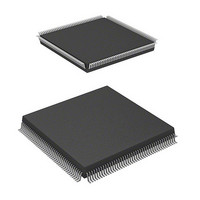HD64F7051SFJ20V Renesas Electronics America, HD64F7051SFJ20V Datasheet - Page 124

HD64F7051SFJ20V
Manufacturer Part Number
HD64F7051SFJ20V
Description
MCU 5V 256K J-TEMP PB-FREE QFP-1
Manufacturer
Renesas Electronics America
Series
SuperH® SH7050r
Datasheet
1.HD64F7050SFJ20V.pdf
(843 pages)
Specifications of HD64F7051SFJ20V
Core Processor
SH-2
Core Size
32-Bit
Speed
20MHz
Connectivity
EBI/EMI, SCI
Peripherals
DMA, WDT
Number Of I /o
102
Program Memory Size
256KB (256K x 8)
Program Memory Type
FLASH
Ram Size
10K x 8
Voltage - Supply (vcc/vdd)
4.5 V ~ 5.5 V
Data Converters
A/D 16x10b
Oscillator Type
Internal
Operating Temperature
-40°C ~ 85°C
Package / Case
168-QFP
Lead Free Status / RoHS Status
Lead free / RoHS Compliant
Eeprom Size
-
Available stocks
Company
Part Number
Manufacturer
Quantity
Price
Company:
Part Number:
HD64F7051SFJ20V
Manufacturer:
RENESAS
Quantity:
101
Part Number:
HD64F7051SFJ20V
Manufacturer:
RENESAS/瑞萨
Quantity:
20 000
- Current page: 124 of 843
- Download datasheet (5Mb)
Section 7 User Break Controller (UBC)
7.3
7.3.1
The flow from setting of break conditions to user break interrupt exception processing is described
below:
1. The user break addresses are set in the user break address register (UBAR), the desired masked
2. The UBC uses the method shown in figure 7.2 to judge whether set conditions have been
3. The interrupt controller checks the accepted user break interrupt request signal’s priority level.
4. The INTC sends the user break interrupt request signal to the CPU, which begins user break
Rev. 5.00 Jan 06, 2006 page 102 of 818
REJ09B0273-0500
bits in the addresses are set in the user break address mask register (UBAMR) and the breaking
bus cycle type is set in the user break bus cycle register (UBBR). If even one of the three
groups of the UBBR’s CPU cycle/peripheral cycle select bits (CP1, CP0), instruction
fetch/data access select bits (ID1, ID0), and read/write select bits (RW1, RW0) is set to 00 (no
user break interrupt is generated), no user break interrupt will be generated even if all other
conditions are in agreement. When using user break interrupts, always be certain to establish
bit conditions for all of these three groups.
fulfilled. When the set conditions are satisfied, the UBC sends a user break interrupt request
signal to the interrupt controller (INTC).
The user break interrupt has priority level 15, so it is accepted only if the interrupt mask level
in bits I3–I0 in the status register (SR) is 14 or lower. When the I3–I0 bit level is 15, the user
break interrupt cannot be accepted but it is held pending until user break interrupt exception
processing can be carried out. Consequently, user break interrupts within NMI exception
service routines cannot be accepted, since the I3–I0 bit level is 15. However, if the I3–I0 bit
level is changed to 14 or lower at the start of the NMI exception service routine, user break
interrupts become acceptable thereafter. Section 6, Interrupt Controller, describes the handling
of priority levels in greater detail.
interrupt exception processing upon receipt. See Section 6.4, Interrupt Operation, for details on
interrupt exception processing.
Operation
Flow of the User Break Operation
Related parts for HD64F7051SFJ20V
Image
Part Number
Description
Manufacturer
Datasheet
Request
R

Part Number:
Description:
KIT STARTER FOR M16C/29
Manufacturer:
Renesas Electronics America
Datasheet:

Part Number:
Description:
KIT STARTER FOR R8C/2D
Manufacturer:
Renesas Electronics America
Datasheet:

Part Number:
Description:
R0K33062P STARTER KIT
Manufacturer:
Renesas Electronics America
Datasheet:

Part Number:
Description:
KIT STARTER FOR R8C/23 E8A
Manufacturer:
Renesas Electronics America
Datasheet:

Part Number:
Description:
KIT STARTER FOR R8C/25
Manufacturer:
Renesas Electronics America
Datasheet:

Part Number:
Description:
KIT STARTER H8S2456 SHARPE DSPLY
Manufacturer:
Renesas Electronics America
Datasheet:

Part Number:
Description:
KIT STARTER FOR R8C38C
Manufacturer:
Renesas Electronics America
Datasheet:

Part Number:
Description:
KIT STARTER FOR R8C35C
Manufacturer:
Renesas Electronics America
Datasheet:

Part Number:
Description:
KIT STARTER FOR R8CL3AC+LCD APPS
Manufacturer:
Renesas Electronics America
Datasheet:

Part Number:
Description:
KIT STARTER FOR RX610
Manufacturer:
Renesas Electronics America
Datasheet:

Part Number:
Description:
KIT STARTER FOR R32C/118
Manufacturer:
Renesas Electronics America
Datasheet:

Part Number:
Description:
KIT DEV RSK-R8C/26-29
Manufacturer:
Renesas Electronics America
Datasheet:

Part Number:
Description:
KIT STARTER FOR SH7124
Manufacturer:
Renesas Electronics America
Datasheet:

Part Number:
Description:
KIT STARTER FOR H8SX/1622
Manufacturer:
Renesas Electronics America
Datasheet:

Part Number:
Description:
KIT DEV FOR SH7203
Manufacturer:
Renesas Electronics America
Datasheet:











